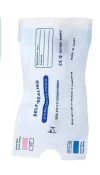undersc0re
Member
I have 10mg vials of tesa, I am just going to start by adding 1.5 ml to my first vial and go with 1mg once a day until it is done. If things are good I will step it up to 2mg per inj and prob go up to 2.5 on the third vial and stay at that. I just have questions relating to this, I don’t really want to subq more than .2ml at a time, what is a suggested maximum subq volume amount for water/peptides? Can 10mg of tesa be ok with only .5 ml of bac or will there be a concentration/irritation and absorption issue?



